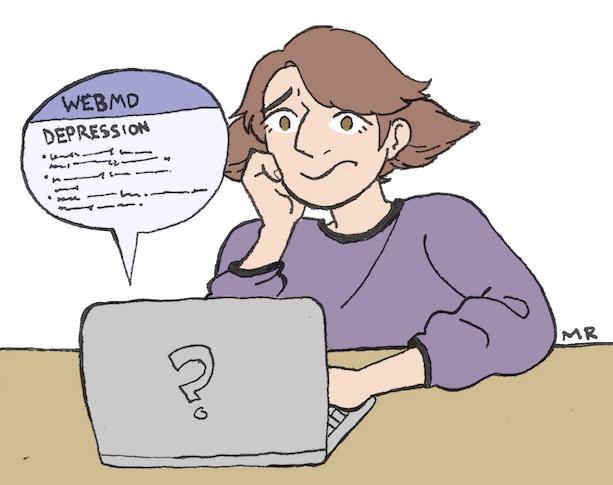A nursing career is a way of life, not just a job.
Nursing is defined by the work ethic and dedication required to provide care to patients in the healthcare setting. It’s what makes you an invaluable asset to your organization; you’re providing a service that has lasting effects on individuals and society.
Nursing careers can be rewarding and challenging at different levels, depending on your interests, experience, or location.
There are many options available for personal development opportunities through clinical practice or through educational programs offered in communities across North America.
One of the best things to do for someone looking for nursing career advice is to attend nursing school.
The Evolution of Nursing Careers
Nursing schools provide students with the necessary knowledge and skills to become nurses.
This includes a variety of coursework in anatomy and physiology, biology, pharmacology, chemistry, psychology, and sociology.
The course load can be overwhelming for some students, but having a basic understanding of the human body will help create a foundation for clinical decision-making.
A nursing program could include one year of prerequisites and two or four years of nursing school. Depending on your school’s curriculum and your previous education (if any), this period of study could potentially last five years.
After completing the nursing program, students will be eligible to take a state licensure exam and can then start their career as an entry-level registered nurse (RN).
A crucial part of being in the healthcare profession is having strong communication skills.
This is where critical thinking comes into play.
RNs must constantly make decisions regarding patients based on their observations and judgments. This puts RNs in positions where they have to carefully consider the consequences of their actions and act quickly if something has gone wrong with the patient’s treatment plan.
Through experience, you’ll learn how to interpret symptoms, problems, and overall needs of patients while emphasizing safety practices.
What Do You Need to Consider When Choosing Your Career?
The first thing you need to have in place is solid mental preparation, which includes effective goal-setting, planning, and time management skills.
Another key component is being certain of what you want out of your life and your future career choices based on the information you’ve gathered during your research on nursing careers.
What Nursing Path to Choose
Choosing your nursing path is important to hone in on the career direction you should take.
What type of work environment best suits you? Areas to consider include oncology, critical care, emergency room, labor and delivery, primary care, and many more.
Is there a specialty that you’re interested in? Here are a few to consider:
Nurse Practitioner (NP)
A nurse practitioner is someone who has completed a bachelor’s degree in nursing and then went on to obtain a master’s degree in nursing and also completed an accredited nurse practitioner program.
Then, as a registered nurse, you’ll have to complete the required hours of nursing experience before taking the exam that’s required by your state to become a certified nurse practitioner.
A nurse practitioner provides health care for patients with common illnesses, injuries, and other conditions such as diabetes, high blood pressure, heart disease, and osteoporosis.
They are also able to prescribe medications based on medical needs, which include some controlled substances.
It takes time to build up your reputation and client base, but with time, you can become an invaluable resource for your organization.
Registered Nurse (RN)
A registered nurse is someone who has graduated from an accredited nursing program and then put in the required practice hours. RNs provide health care for patients with acute and chronic illnesses and also perform diagnostic tests to determine a patient’s condition.
Nurses provide emotional support to patients as well as their families, helping them make decisions regarding their healthcare. They also administer medications, start IV fluids, and take vital signs.
An important aspect of being an RN is taking care of patients that are admitted to the hospital.
They include assisting doctors with different procedures, administering medication to inpatients, and supervising nursing students and new nurses on their first job assignment.
Licensed Practical Nurse (LPN)
A licensed practical nurse is a person who graduated from an accredited nursing program or has a diploma in practical nursing and then completed an approved clinical program before passing the state exam.
Their primary responsibility is to administer patient exams, provide first aid, change bandages and dressings, prepare patients for surgery, and much more.
An LPN works with RNs to provide care for patients and support them on their journey to recovery.
Certified Nurse-Midwife (CNM)
A person who has taken on the nurse-midwife (CNM) certification is someone who has earned a nursing degree and then completed a CNM program.
There are two main areas of specialization for CNMs – obstetrics and gynecology, which focuses on pregnancy, childbirth, and gynecological care, and family practice, which deals with routine patient care.
The skills needed to be an effective midwife include having excellent people skills, being compassionate, having strong communication skills, and being able to work in a team environment with other health professionals.
Midwives provide care to women during pregnancy and childbirth safely at home or in hospitals and birthing centers.
Certified Registered Nurse Anesthetist
A person who has earned a certificate in CRNA certification is someone who has completed an accredited anesthesia program and then passed the state exam.
They’ve also completed an additional training program in advanced cardiac life support, which will help them perform emergency surgeries and provide advanced cardiac life support to patients to help keep their hearts beating.
Certified registered nurse anesthetists provide anesthesia care for patients undergoing surgery and intravenous (IV) sedation for patients who are unable to safely give consent or are unable to speak because of medical conditions.
As anesthesiologists, they’ll be responsible for monitoring a patient’s status, including observing vital signs.
Certified Psychiatric Mental Health Nurse Specialist
A person who has earned a certificate in psychiatric nurse certification is someone who has completed a master’s degree in nursing before completing the required certifications.
They’ll be responsible for helping patients with mental health challenges and also providing treatment for them.
The initial contact that a certified psychiatric mental health nurse specialist will have with a patient will provide them with an opportunity to evaluate their psychological, emotional, and physical needs as well as their responses to treatments.
After collecting enough information, they’ll develop an individualized plan for positive outcomes for patients by collaborating closely with other team members such as social workers, psychiatrists, psychologists, and medical staff.
How Will Nurse Roles Change in the Future?
Professional nursing today has evolved significantly in the last decade.
Today, it’s more important than ever to keep up with what’s happening and have a good understanding of the latest trends, especially in troubled economic times.
In order to preserve professionalism and confident interactions between patients, families, and staff, professionals must be able to adapt to change to meet the needs and interests of their clients.
Technology is going to be a big part of nursing in the future.
The department of health and human services has recently introduced a group called the Digital Health Inclusion Working Group that aims to find more effective ways to provide care through technology when and where it’s needed most.
The group wants to work on solutions that are cost-effective, can be implemented quickly, reduce risks, and help communities meet the needs of their citizens.
This type of collaboration is sorely needed in today’s technological-driven society, and it’s going to be vital for those pursuing professional nursing careers.
In order to stay on the cutting edge of this exciting field, make sure you keep up with the latest news and trends regarding the nursing industry.
Another aspect to consider is the focus on geriatric care.
The balance of our society is shifting as people are living longer, and there are more seniors in the country than ever before. With this new demographic will come an increased interest in the professional nursing careers of geriatric nurses.
Geriatric nurses are also needed to help patients recover from illnesses or accidents and prepare them for retirement needs such as Medicare and long-term care.
If you think you’re interested in a job that’s all about taking care of seniors, you could consider becoming a geriatric nurse.
Conclusion
Nursing has been a core career in the medical field for hundreds of years.
Though every job will require new skillsets and abilities, many nurses have a natural talent to help people and care for their chosen field.
In order to further progress in the profession, nurses must be willing to update their education and maintain their knowledge through professional certifications, continuing education courses, and working under the supervision of other professionals.
Nurses who choose this path will find that they’re happier in their positions because they’ve found careers that fit them perfectly and are passionate about helping others.
The career of a nurse is changing rapidly, and they must be willing to adapt to it.
As you look ahead to your future as a nurse, consider becoming certified in your chosen specialty areas and working in a facility where you can use your skills and knowledge to help others.

















